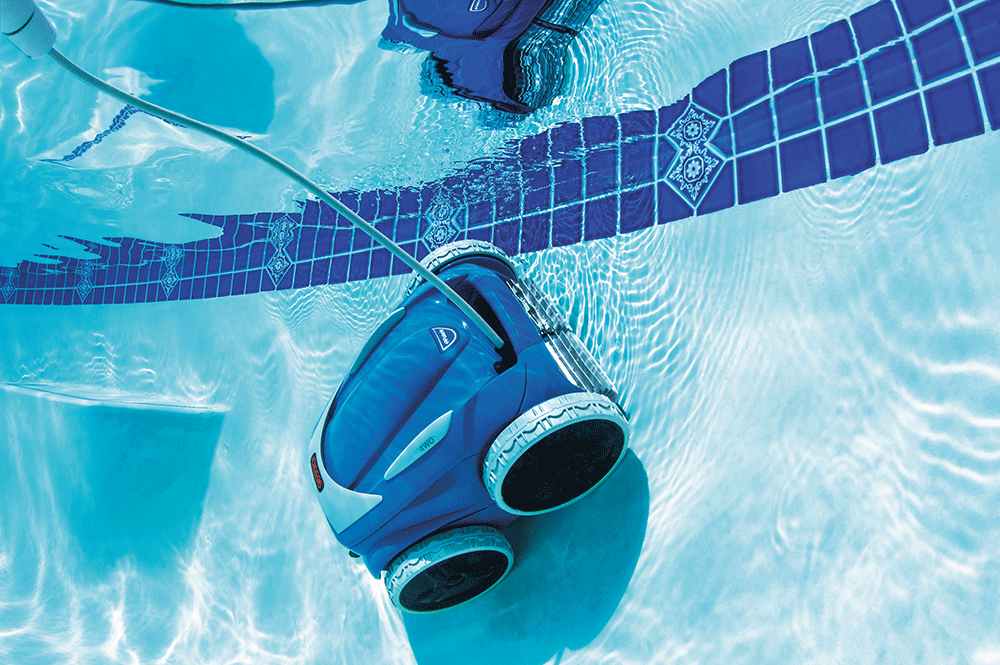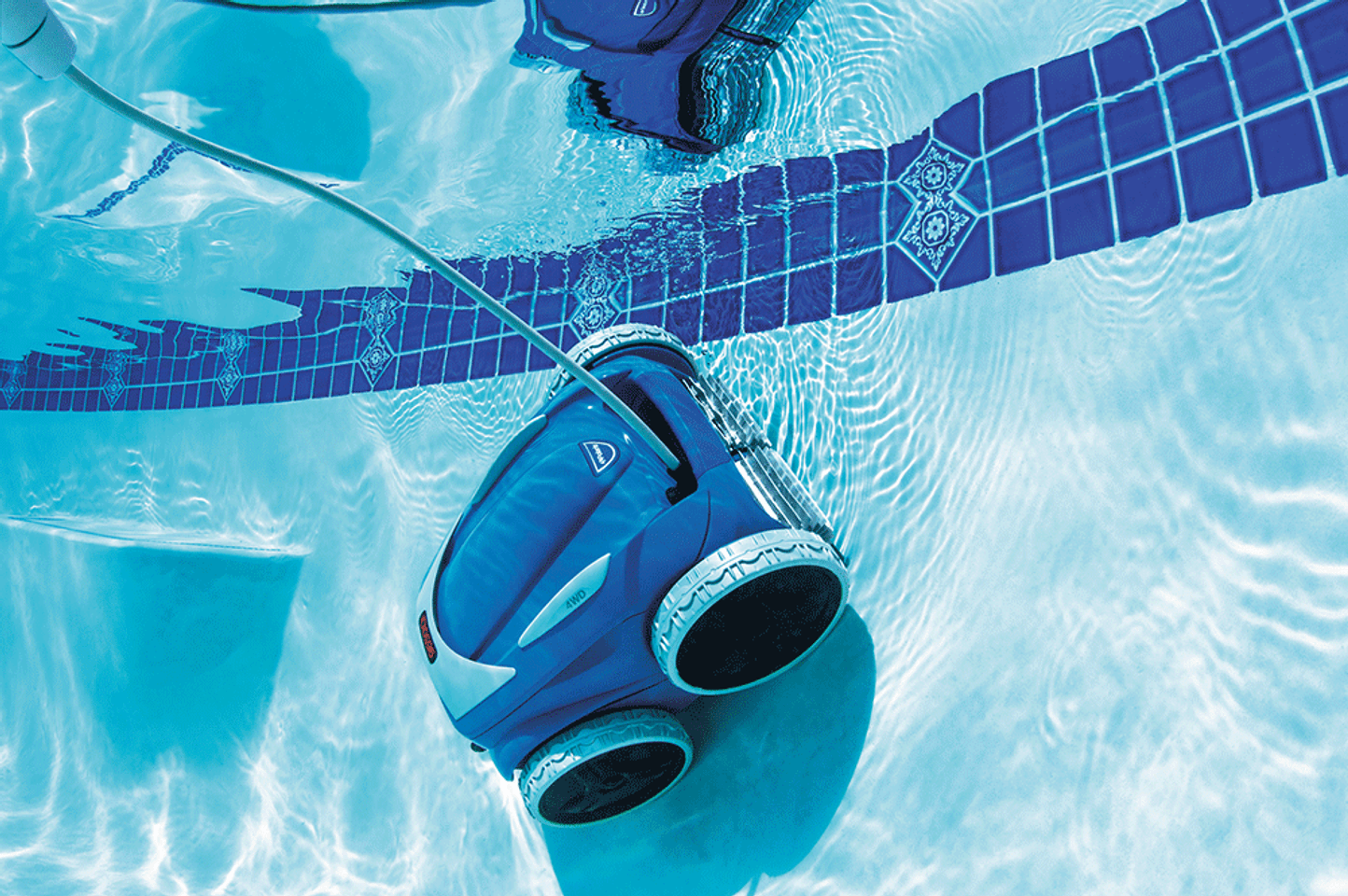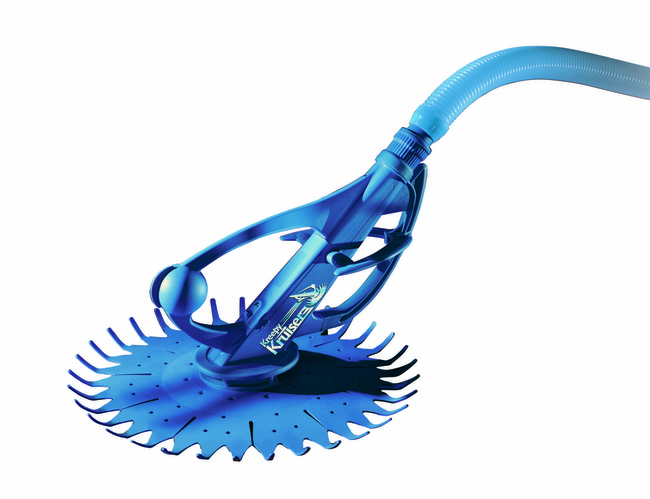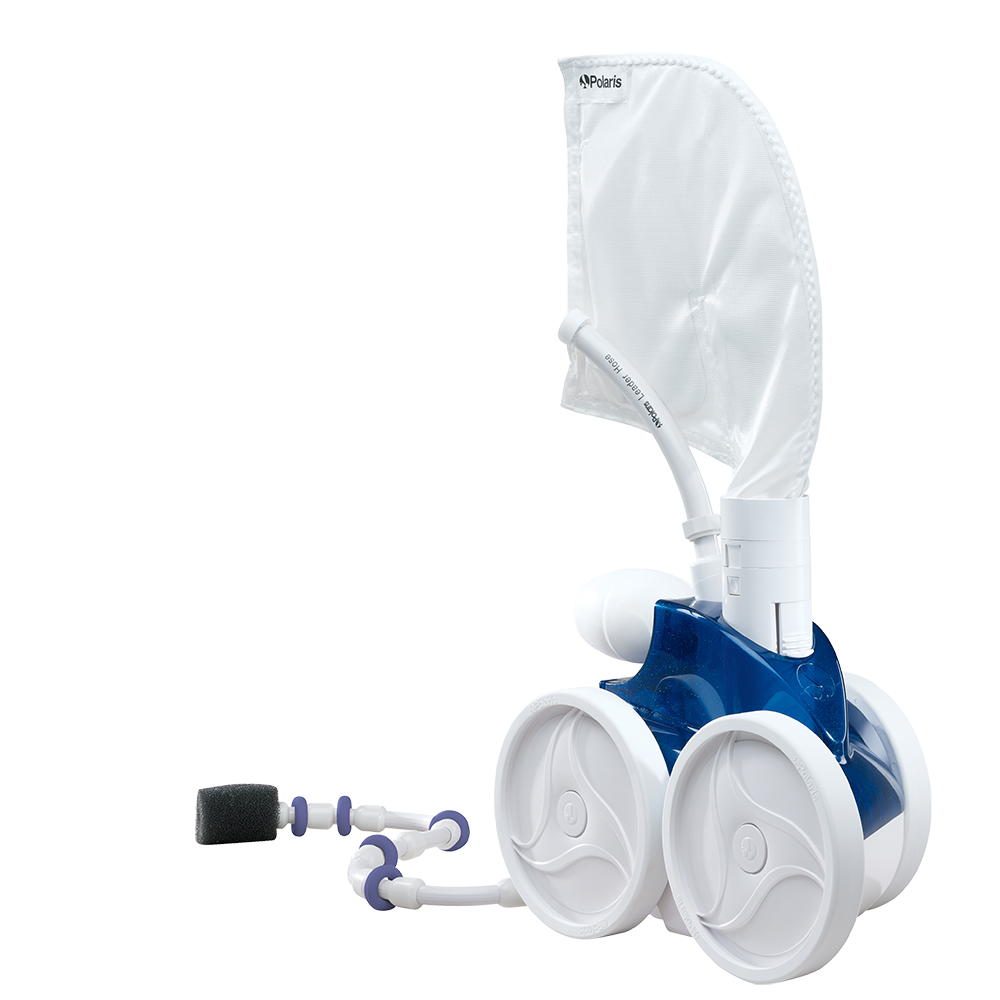Which Automatic Pool Cleaner Should I Buy?

Which Automatic Pool Cleaner Should I Buy?
Break out the board shorts, unfold the beach chairs, and uncover the pool—summer is here! As you get your pool ready for a splashing good time remember…it takes work to keep your pool looking crystal clear all summer long.
Maybe you’re a new pool owner who just realized that keeping a pool clean is a whole lot of work! Or maybe you’re an old school pool pro who is tired of shoving a manual vacuum along the bottom of your pool at dawn every morning. Either way, It’s time for an upgrade. Having a great automatic pool cleaner will take the stress out of summer (and off your back) and give you more time every day to soak up some rays on your inflatable pool mattress.
But my, oh my! There are so many choices! Robotic? Suction-side? Pressure-side? Where should you even begin?
Don’t worry.
In this guide, we are going to break down the differences between the three types of automatic pool cleaners, explain how they work, and help you decide which type of automatic cleaner is right for your pool. Let’s dive in!
Pool Circulation
Before you can choose an automatic pool cleaner you first need to understand your pool’s built-in systems for cleaning itself. When your pump is on, the water in your pool is constantly moving. This is called circulation and it is essential to keeping your pool clean and crystal clear. Your pool’s water circulates in 4 steps:
The Pump
Every pool has a main pool pump. Without it, circulation is impossible. The pump is what keeps the water in your pool moving through the cleaning process, so it is super duper important that, if you have problems with your pump, you address it ASAP. The pump is the most important part of your pool (except for maybe the walls?).
The Skimmer: Suction-side
When your pump turns on, it begins pulling the water out of your pool through the skimmer. The skimmer is the rectangular hole on the side of your pool that will often have a flap and a basket. The skimmer’s purpose is to catch large debris like leaves, twigs, your children’s abandoned pool toys, etc. and prevent them from flowing through your pump and clogging up your filter (more on that next).
The Filter
The pump then pulls the water through the pump and into the filter—the second most important part of your pool’s cleaning system. The filter catches all the small debris that made it through the skimmer. It is responsible for taking your not-so-clean water and making it beautifully clear again!
Like any good filter, your pool’s filter needs to be cleaned and changed regularly. Pools are dirty and your filter is working hard for you. If you let the debris inside build up too long, it will impede circulation and put added strain on your pump.
The Return: Pressure-side
The return jets take the water from your filter and put it back into the pool. These jets are located on the opposite wall from your skimmer. Your pool could have either one or multiple return jets. Once the water reaches the return jets it has been fully circulated. Time to celebrate!
How Automatic Pool Cleaners Work
So, what does all of this have to do with automatic pool cleaners? Well, the effectiveness of a cleaner is directly related to how well your pump circulates the water in your pool. Automatic cleaners can either attach to your skimmer (suction-side), your return (pressure-side), or run independently (robotic).
Each category has its own set of pros and cons, which is what we are going to break down next.
Suction-side Automatic Pool Cleaners
Suction-side pool cleaners attach either to your skimmer or to a dedicated vacuum line in your pool’s cleaning system. I’m sure you can guess why they are called “suction-side”. They rely on the suction created by your pool’s pump to propel it along the pool floor and vacuum up debris.
How do suction-side cleaners work?
When a suction-side cleaner is attached to your skimmer (or dedicated vacuum line), suction from the pump pulls water in from the bottom of the cleaner. That suction pressure propels your cleaner along the pool floor and picks up debris along the way.
Some cleaners will have wheels to drive around while others will be round disks that slide over your pool floor. Suction-side cleaners do not have a bag to collect debris. Instead, they pull the debris into your pool’s cleaning system, allowing your skimmer and filter to catch everything.
The Pros of suction-side cleaners
Suction-side cleaners are the easiest automatic pool cleaners on your wallet. You can find a good suction-side cleaner somewhere between $150 to $500. Not bad! The more expensive models will feature stronger suction, more energy efficiency and a wider range.
The cons of suction-side cleaners
A suction-side cleaner will do a fantastic job cleaning your pool, however there are two big considerations you should know about.
- Left over debris . Most cleaners don’t generate enough suction to grab tiny debris and silt, they rely on your pool pump and filter efficiencies. So, while you will have to do it less often, it would be a good idea to keep the handy dandy manual cleaner around to pick up debris that may be missed off the bottom.
- A dirty pool filter . Because suction-side cleaners pull debris into your circulation system, your filter will fill up much faster. You will need to clean and potentially replace it more often.
Who should get a suction-side pool cleaner?
If you’re on a tight budget or just testing the waters (pun intended) of automatic pool cleaners, then suction-side cleaners are right for you. They work well in both above-ground and in-ground pools and are approachable, easy to use and affordable. BUT! Don’t make your decision yet! Keep reading to make sure you are picking the best cleaner for your pool.
Pressure-side Automatic Pool Cleaners
Pressure-side cleaners provide a ton of value for the money. These cleaners connect to your water return—or pressure-side—to move around your pool and keep it looking spotless. Most pressure-side cleaners require an additional booster pump and separate connection, but there are some models that connect directly to your pool’s return jets.
How do pressure-side cleaners work?
Once your pressure-side pool cleaner is attached to your return jet or dedicated return line it is ready to rock and roll. When your pump circulates water through the system it pushes water out of the return, through the cleaner hose and to the cleaner. This water pressure propels the cleaner along your pool’s floor and walls and creates a cyclone underneath that picks up all the debris.
All pressure-side cleaners have their own debris bag to collect everything it picks up. These bags are usually located on top of the cleaner, but some models pull the debris bag behind them with a sweeping motion.
For most models you’ll need a booster pump. This pump is on a separate return line so it can create a strong and steady flow of water to keep your cleaner moving without adding extra strain on your main pool pump. It helps keep your main pump tough and fully functioning—wouldn’t want that going out mid-July, would we?!
Pros of pressure-side cleaners
Again, pressure-side pool cleaners provide great value across a wide price range. You can get one from $200 up to $800. A high-quality pressure-side cleaner is a little more expensive than its suction-side counterpart, but it will have many great features to make the extra money worth it.
- A built-in debris bag. This style cleaner doesn’t use your pool’s filter to catch debris. Instead, all pressure-side cleaners have their own debris bags. Because pressure-side cleaners are on the return, water is flowing back into the pool through the cleaner rather than into the filter. The cleaner then uses this pressure to generate a cyclone underneath that picks up debris from the bottom and into the built-in debris bag.
- Better water circulation. Because the water is flowing from your return, through the pressure-side cleaner and back into the pool, it does a better job of distributing clean water all around your pool. This aids the cleaning process by circulating the water more efficiently and disrupting stagnant areas that manage to avoid your pool’s natural water flow.
- Durability. You’ll be able to use a pressure-side pool cleaner for a long time without having to worry about it breaking. If something does go wrong, most models are simple enough that you can repair them yourself—avoiding a costly trip to the manufacturer or repair man.
Cons of pressure-side cleaners
The biggest con for this style is the need for a booster pump with most models. If your pool does not already have one it can be quite the project to get it installed. It is probably best to either look at models that will connect directly to your return jet or consider another style.
Who should buy a pressure-side pool cleaner?
If you’re someone who prioritizes value and doesn’t mind spending a little more on a cleaner that will last, pressure-side cleaners are perfect for you. They are simple and durable self-contained cleaning units that will keep your pool fresh all summer long. Just remember to find a model that works with your pool! If you already have a booster pump and dedicated return line, then a pressure-side pool cleaner is a no-brainer.
Robotic Automatic Pool Cleaners
Last, but certainly not least, are the robotic pool cleaners. These bad boys are the Cadillacs of clean. The Porsches of the pool. The Rolls-Royces of aquatic roving. They get the job done and don’t require your main pool pump to do it.
How do robotic cleaners work?
Robotic pool cleaners are powered by electricity. The power cord (protected by water-proof insulation, of course) connects to a low-voltage transformer that plugs into a regular 110v electrical outlet and provides the cleaner a low DC voltage. The cleaner itself has a motor and a pump to drive around the bottom of your pool picking up debris like a Mars rover exploring uncharted territory.
Like the pressure-side cleaner, robotic cleaners have built-in debris bags so your pump and filter don’t have to do any of the work.
Robotic cleaners are getting smart. Many of them now have on-board computers that learn as they go, helping them clean your pool more efficiently. Some models now come with a remote control that lets you direct the vacuum from the side, giving you total control over how and where they clean.
Pros of robotic cleaners
Robotics are the best cleaners out there. They have several cool features that help them stand out next to pressure-side and suction-side cleaners.
- Energy efficiency . Because they plug into your outlet rather than your pump, they consume a lot less electricity. You can turn your pump off while the cleaner is doing its thing so all the debris settles to the bottom, making the cleaning time even faster.
- Powerful. Most robotic cleaners will climb and scrub your walls, tile line and some will even do your stairs with ease. The built-in pump and motor let it pick up more debris of all shapes and sizes.
- A closed system . No part of a robotic cleaner depends on your pump. You can just pretend your pump isn’t even there while the robotic cleaner is chugging along. They are completely autonomous.
- Cleaning Control. With pressure-side and suction-side cleaners, you just put them in the water and hope it hits all the trouble spots. With robotic cleaners the on-board computer they will learn and clean your pool more efficiently. Some robotic cleaners even have a remote that lets your drive to those pesky little spots where debris and leaves like to settle. No need to wait!
Cons of robotic cleaners
It’s hard to come up with cons for robotic cleaners because they do their job so well, but don’t worry…I thought of a few for you.
- Price. You can find a most robotic cleaners priced anywhere from about $400 to $1500. That’s significantly more than most suction-side and pressure-side cleaners.
- Complexity. You probably won’t be fixing a robotic cleaner in your garage on a Saturday afternoon. They are complex pieces of machinery that will most likely require professional help if something goes wrong.
Who should buy a robotic pool cleaner?
If you are someone who likes to have the best of the best, then these cleaners are for you. The price is significantly higher than suction-side and pressure-side models, so you’ll need to be okay spending a little more for a great cleaner. Don’t worry, though. They are worth the investment. Just make sure you can reach a power outlet before bringing a robotic pool cleaner home!
Wrapping Up
All three automatic pool cleaner styles will keep your pool clean and give you more time to lounge around your pool with friends and family (or maybe just by yourself!) all summer long. If you keep your filters clean and perform minor routine maintenance, they will all work well for many seasons.
Have you decided what style is best for you? It’s time to retire that exhausting old manual vacuum and let an automatic pool cleaner keep your pool crystal clear all summer long. Happy swimming!




